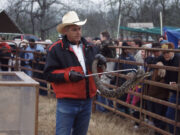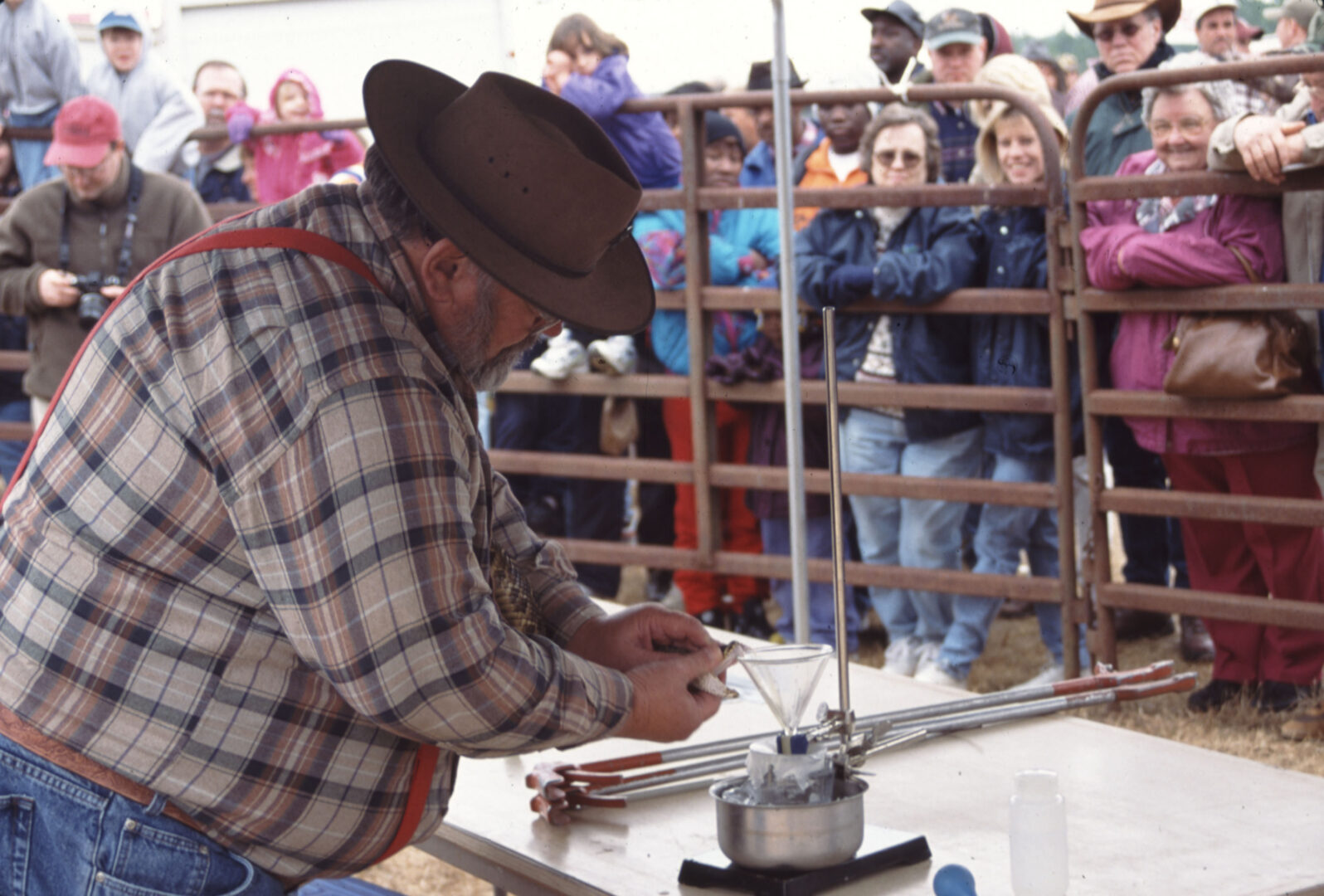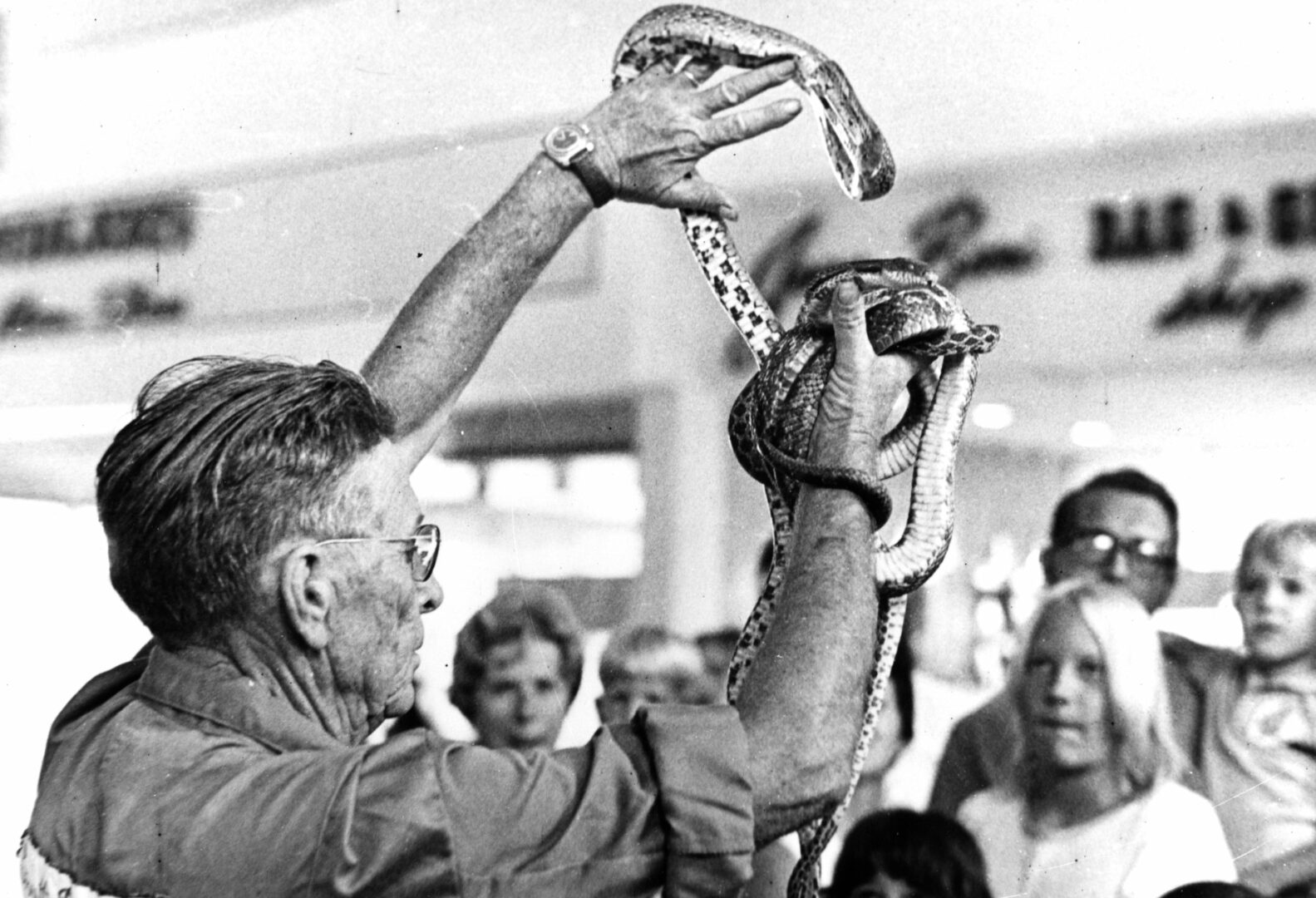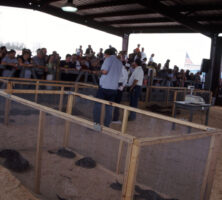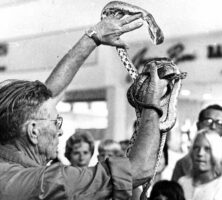Rattlesnake roundups are highly controversial events held in more than twenty-five communities in seven different states, including Georgia. The original purpose of most rattlesnake roundups was to reduce venomous snake populations in communities where snakebites were thought to significantly threaten humans, livestock, and pets. Although civic groups that organize rattlesnake roundups donate proceeds to charities and other nonprofit organizations, conservationists and environmentalists are becoming increasingly concerned about the negative impact these events have on wildlife.
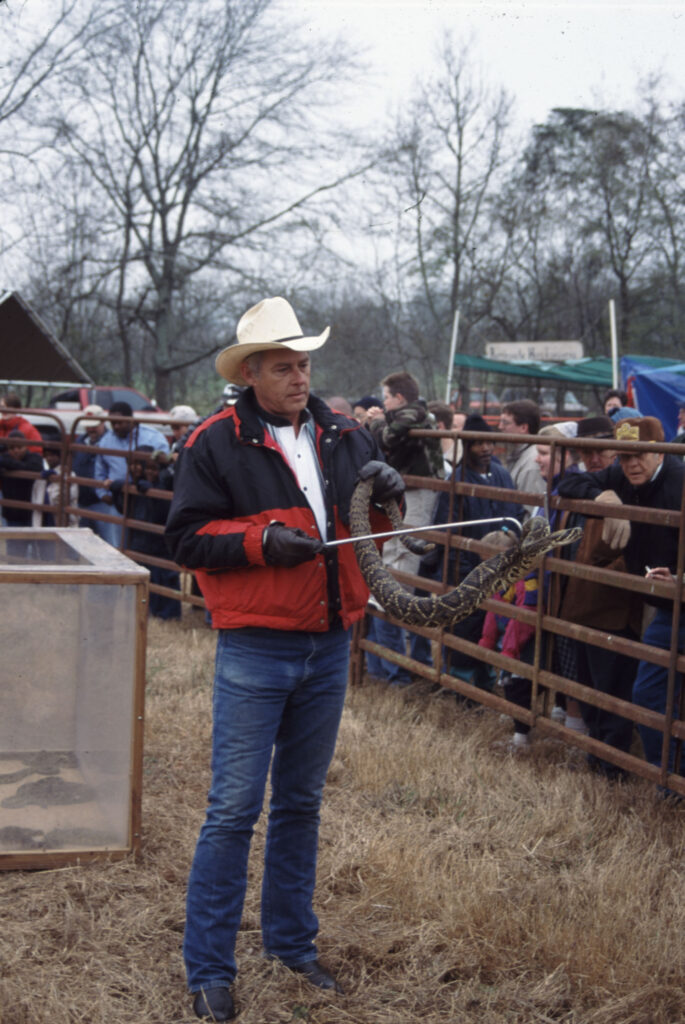
Courtesy of John B. Jensen, Georgia Department of Natural Resources
In Georgia rattlesnake roundups date back to 1960, when Whigham, a town in Grady County, held the first such event. Claxton, in Evans County, and Fitzgerald, in Ben Hill County, have hosted rattlesnake roundups as well. The Whigham Rattlesnake Roundup takes place in January, and the Claxton roundup is held in March. In 2001 Fitzgerald replaced its roundup with a wild chicken festival, largely to escape growing public condemnation.
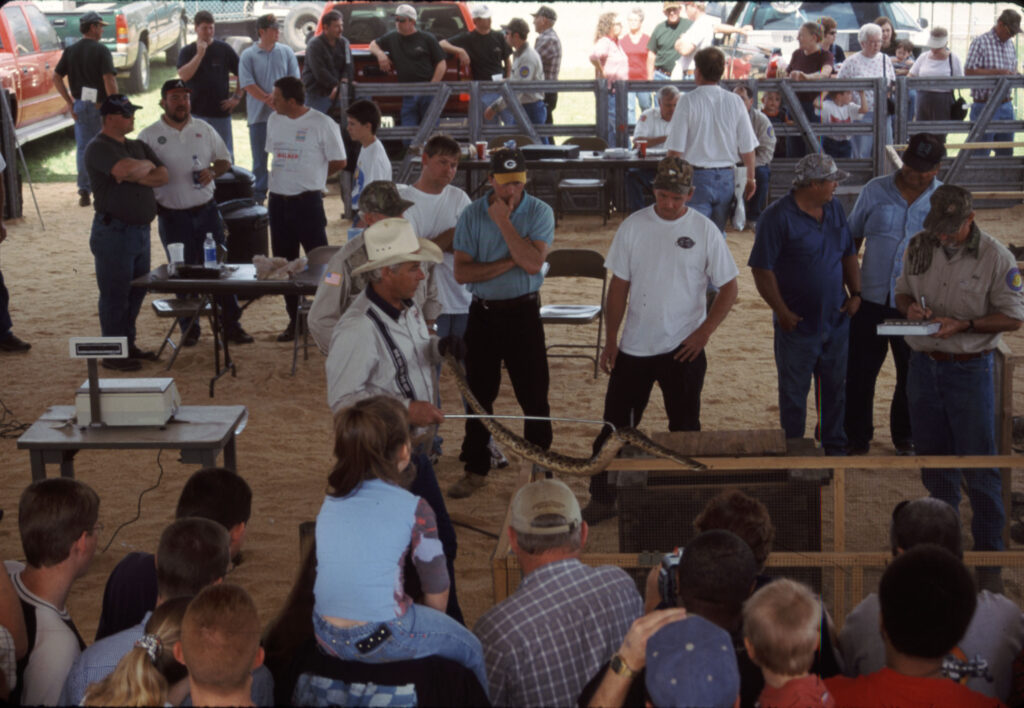
Courtesy of John B. Jensen, Georgia Department of Natural Resources
Typically, 300-600 rattlesnakes are collected annually for Georgia rattlesnake roundups, but some years have yielded more than 1,000 snakes. Eastern diamondback rattlesnakes make up the vast majority of the collected snakes, although a small number of timber rattlesnakes are also entered. The standard method for collecting snakes is to dig them out of gopher tortoise burrows or force them out by introducing gasoline fumes through an inserted garden hose. Both methods are harmful—and often fatal—to the tortoise and other burrow inhabitants, some of which are protected as endangered species under state and federal laws.
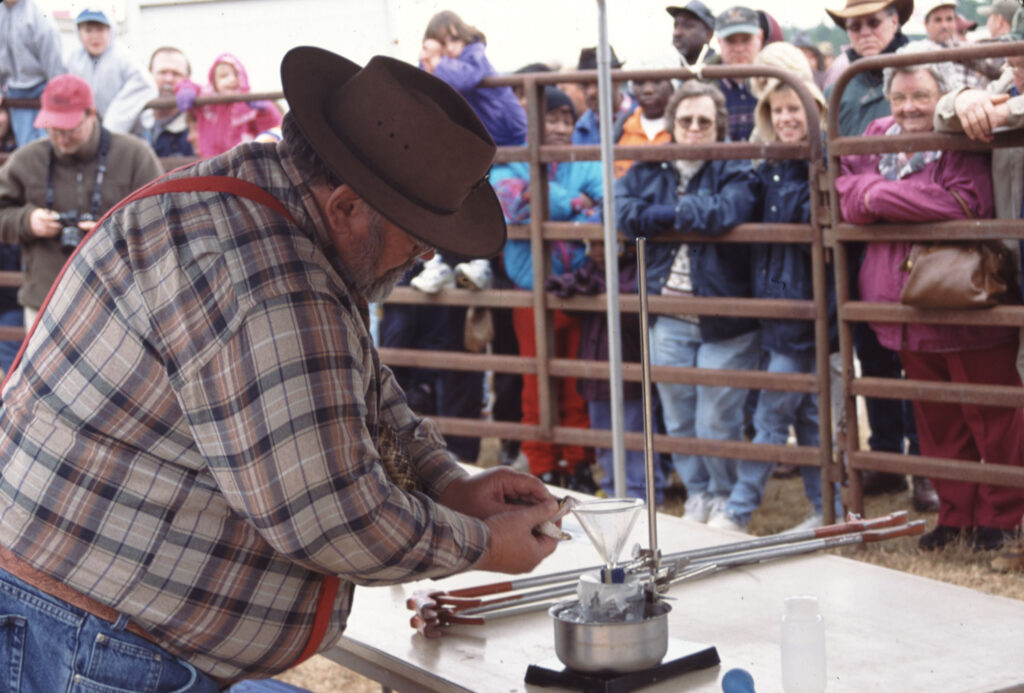
Courtesy of John B. Jensen, Georgia Department of Natural Resources
In addition to a bounty based on the length of the snake, hunters are awarded cash prizes for the greatest number of snakes collected by an individual or team and for the heaviest snakes. The collected snakes are bought by skin processors, who slaughter them and prepare the skins for use in leather products and curios.
Although the collected rattlesnakes are certainly a focal point of the festivals, such typical community fair events as parades, beauty contests, arts and crafts exhibits, amusement rides, and food vending are the primary attractions for the public. Tens of thousands of people attend rattlesnake roundups in Georgia each year, but usually only a few dozen hunters contribute all the snakes.
In recent years conservationists have noted significant declines in populations of eastern diamondback rattlesnakes. Although habitat deterioration is probably the greatest threat to this reptile, roundups are believed to be a contributing factor. Hunters who previously collected snakes mainly in the vicinity of the roundup-hosting communities and for only a short period of time preceding the events, now collect snakes year round all over the southeastern United States.
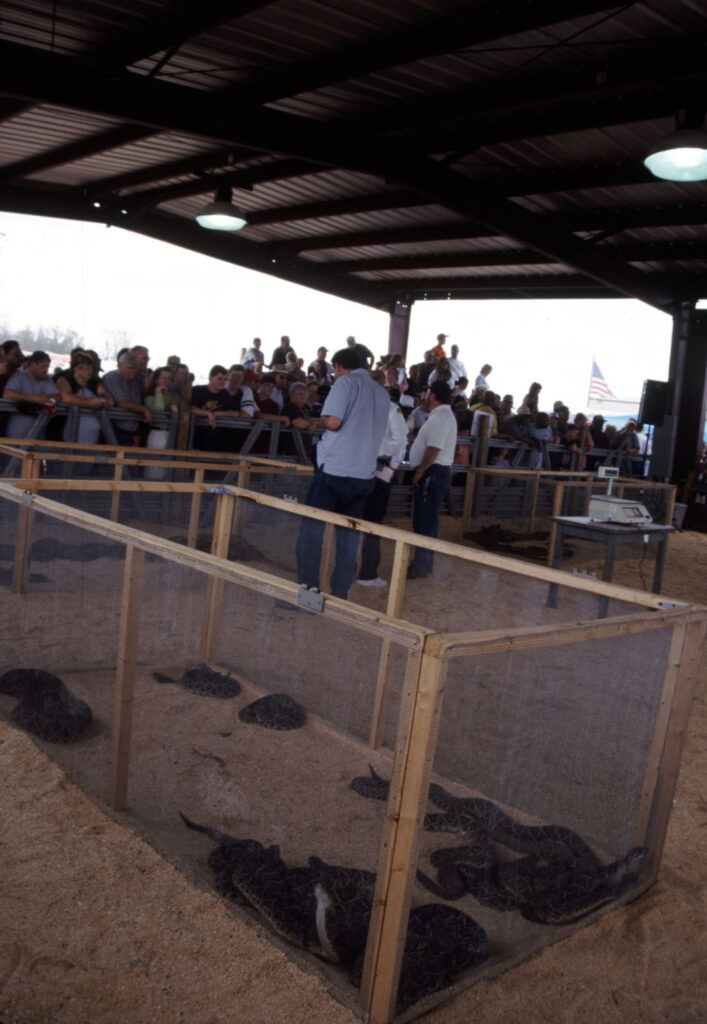
Courtesy of John B. Jensen, Georgia Department of Natural Resources
Organizers of rattlesnake roundups claim the events produce several benefits: they cull dangerous snake populations, provide a local economic boost, support charitable organizations, and contribute venom for medical research. Others believe rattlesnake roundups are cruel, harmful to the environment, and promote disrespect for legitimate members of our natural heritage.


